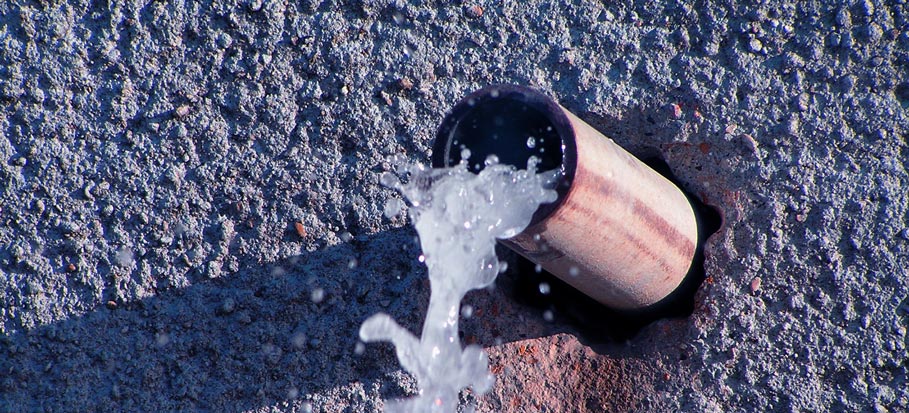Exactly how to Inspect If Your Residence Has a Hidden Leak
Exactly how to Inspect If Your Residence Has a Hidden Leak
Blog Article
How do you really feel on the subject of Locating water leaks?

Early detection of leaking water lines can alleviate a prospective catastrophe. Some small water leakages may not be visible.
1. Examine the Water Meter
Every house has a water meter. Checking it is a proven manner in which assists you discover leaks. For starters, shut off all the water resources. Ensure nobody will purge, use the tap, shower, run the cleaning device or dishwasher. From there, most likely to the meter and watch if it will alter. Given that no person is using it, there need to be no activities. That indicates a fast-moving leakage if it moves. If you spot no changes, wait an hour or two and also inspect back again. This indicates you might have a slow leak that can even be below ground.
2. Examine Water Intake
Analyze your water expenses and also track your water consumption. As the one paying it, you should notice if there are any disparities. If you identify sudden changes, in spite of your usage being the same, it implies that you have leakages in your plumbing system. Remember, your water costs ought to fall under the exact same variety each month. An abrupt spike in your expense suggests a fast-moving leak.
On the other hand, a consistent rise every month, despite having the exact same behaviors, shows you have a slow leakage that's also gradually rising. Call a plumber to completely check your residential property, specifically if you feel a warm area on your floor with piping below.
3. Do a Food Coloring Examination
When it comes to water usage, 30% comes from toilets. If the shade in some way infiltrates your dish during that time without flushing, there's a leak in between the storage tank and also bowl.
4. Asses Outside Lines
Don't fail to remember to inspect your outside water lines also. Should water leak out of the link, you have a loosened rubber gasket. One tiny leak can throw away tons of water as well as spike your water bill.
5. Evaluate and Evaluate the Circumstance
Property owners need to make it a habit to inspect under the sink counters and also also inside cabinets for any kind of bad odor or mold growth. These 2 warnings show a leakage so prompt focus is required. Doing regular examinations, also bi-annually, can save you from a significant issue.
Inspect for stainings and also weakening as a lot of pipes as well as home appliances have a life expectations. If you suspect leaking water lines in your plumbing system, do not wait for it to escalate.
Early discovery of dripping water lines can mitigate a potential disaster. Some tiny water leaks might not be noticeable. Checking it is a guaranteed method that helps you find leakages. One small leakage can waste lots of water as well as surge your water costs.
If you believe dripping water lines in your plumbing system, don't wait for it to intensify.
WARNING SIGNS OF WATER LEAKAGE BEHIND THE WALL
PERSISTENT MUSTY ODORS
As water slowly drips from a leaky pipe inside the wall, flooring and sheetrock stay damp and develop an odor similar to wet cardboard. It generates a musty smell that can help you find hidden leaks.
MOLD IN UNUSUAL AREAS
Mold usually grows in wet areas like kitchens, baths and laundry rooms. If you spot the stuff on walls or baseboards in other rooms of the house, it’s a good indicator of undetected water leaks.
STAINS THAT GROW
When mold thrives around a leaky pipe, it sometimes takes hold on the inside surface of the affected wall. A growing stain on otherwise clean sheetrock is often your sign of a hidden plumbing problem.
PEELING OR BUBBLING WALLPAPER / PAINT
This clue is easy to miss in rooms that don’t get much use. When you see wallpaper separating along seams or paint bubbling or flaking off the wall, blame sheetrock that stays wet because of an undetected leak.
BUCKLED CEILINGS AND STAINED FLOORS
If ceilings or floors in bathrooms, kitchens or laundry areas develop structural problems, don’t rule out constant damp inside the walls. Wet sheetrock can affect adjacent framing, flooring and ceilings.
https://www.servicemasterbyzaba.com/blog/how-to-detect-water-leakage-in-walls/
.jpg)
We had been introduced to that editorial on Hacks to detect leaks from someone on a different web property. Sharing is nice. Helping people is fun. Many thanks for your time. Kindly come by our site back soon.
Report this page